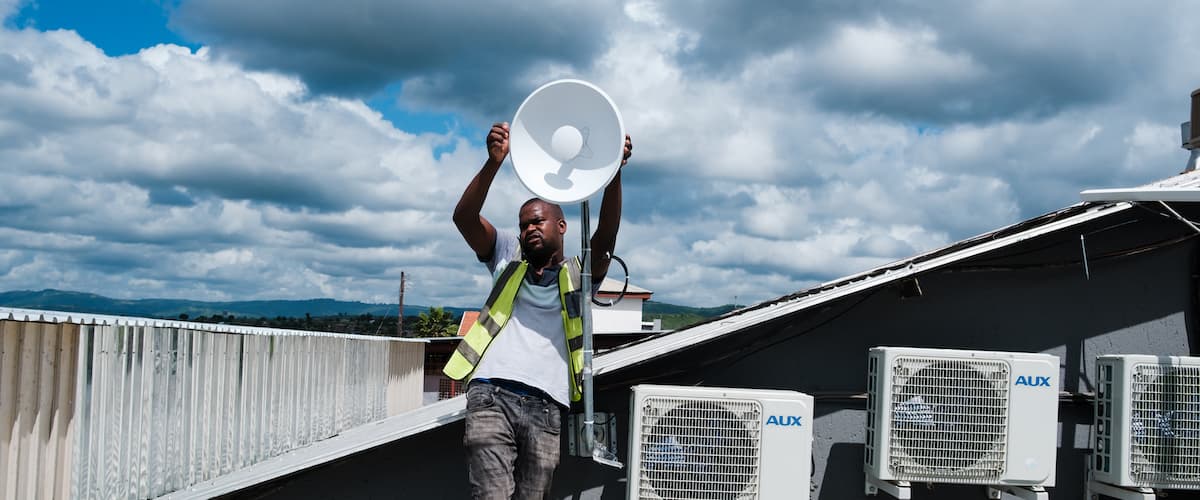Accessing the Internet isn’t just challenging in many rural, remote, and low-income urban areas—it’s a significant hurdle. The digital divide looms large, it has many causes, and it affects people from diverse backgrounds all over the world.
Some impacted are from Indigenous communities that have been neglected due to lack of business interest, like in the Chaco region of South America. Others are so isolated that building infrastructure is tricky due to geographical or weather conditions, such as the communities of Khunde and Khumjung near Everest or Ulukhaktok in the Canadian Arctic.
But even in urban areas like Baltimore in the United States, historically marginalized people struggle to connect. For these, and many other communities, the Internet is not just a source of entertainment or social interaction. It is a lifeline to essential services, education, and economic opportunities.
People, organizations, and governments have tried bridging the connectivity gap by supporting and building community networks. These are local networks built and managed by the community that uses them, initiatives that typically start with shared objectives not necessarily related to the Internet, such as community development, education, or healthcare. But as these groups identify the Internet as a potent tool to amplify their impact, they embark on a journey to build community-driven networks tailored to their specific needs.
Who can build a community network?
There is not one type of person or organization that depicts a typical community network builder. Skill sets can range from technical to entrepreneurial, but all have the drive to make Internet access affordable and accessible for their community.
Some people building community networks are experts with technical backgrounds and know how to set everything up to have a network running in no time, but they might just need funding to get the equipment they need. Others can be local non-profit organizations with no technical backgrounds, working with local communities in projects as different as agriculture initiatives or entrepreneurship. However, they all can face challenges in different steps of the process.
Even with a technical background, some might not have experience identifying other community champions who can help take the project forward. Similarly, they may not be familiar with the local regulatory environment and licensing requirements to make sure the network is within legal boundaries. At the same time, organizations can be community engagement experts without business experience to ensure the community network remains financially sustainable in the long run.
It may seem overwhelming, but people have been overcoming these challenges for years and doing it successfully. We have seen that with the right tools, everyone can build a community network.
The Community Network Do-It-Yourself Toolkit
With this vision in mind, we developed the Community Network Do-It-Yourself Toolkit. In 10 steps, it organizes a series of resources that outlines everything you need to know to prepare, build, and maintain a community network. It includes manuals, case studies, online training, and several other materials from us and others that help local organizations and communities build a community network.
Before getting into the nitty-gritty of laying cables and setting up routers, the toolkit covers some essentials, like helping community organizers and network builders understand what their community needs. This way, the network fits in with the local area and deals with the biggest challenges first.
Then, the toolkit discusses the importance of building a sense of ownership in the community. A successful community network isn’t forced onto people from the outside; it grows from within. The steps outlined in the toolkit encourage the community to be a big part of building the network.
The toolkit also pays a lot of attention to sustainability, meaning the network not only works well at the start but also keeps going strong. It considers money matters and how to keep things running smoothly over time. Finally, it provides all the technical information needed to build a working community network.
Each step carries additional reading materials for diving deeper into what each one feels is more critical for their community network initiative. Following this process is also helpful for prospective applicants to the Connecting the Unconnected program, where organizations can apply for funding to support their community network projects.
Check out the Community Network Do-It-Yourself Toolkit and learn how to bring connectivity to your community.
Image © Nyani Quarmyne

